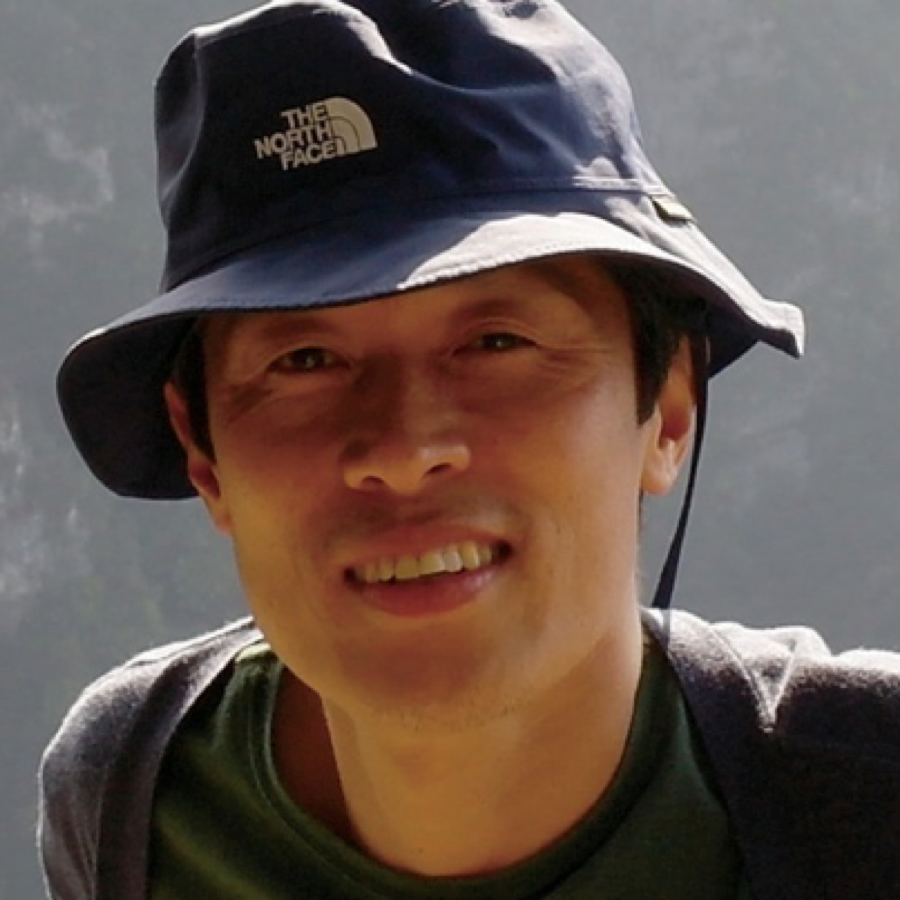
- Ph. D.
- Kwang-Guk An
- Environmental Ecology
- N11-305
- Laboratory of Environmental Ecology (N11-306)
- +82-42-821-6408
- kgan@cnu.ac.kr
Academic Career
- Ph. D., 1998, University of Missouri, Columbia, USA. Limnology (Freshwater Ecology)
Career
- Post-Doc., 1998-2000, School of Natural Resource, University of Missouri, Columbia, USA
- Full-time Lecturer (BK), 2001- 2002, Dept. of Environmental Science and Engineering, Ewha Womans University, Seoul, Korea
Research Interests
-
Stream ecosystem health assessments
The purpose of our search is to develop multi-metric ecological models, based on the Index of Biological Integrity (IBI) using fish assemblages and Quantitative Habitat Evaluation Index (QHEI) as a tool for assessments of ecological stream health. Eleven to eight metric systems were adopted for the IBI model to evaluate ecological stream health condition. Several metric attributes of original 12 metrics, suggested by Karr (1981), were modified for a development of the model in Korean waterbodies. The stream health conditions were evaluated as five criteria through the application of the model, and the evaluations were applied to major watersheds of Han-River, Geum-River, Nakdong-River, and Sumjin-River, and Youngsan-River in Korea. The present bioassessment methodology may be used as a key tool to set up specific goals for stream restoration plans as well as a biological measure diagnosing current stream conditions.
-
Nutrient dynamics and reservoir eutrophication
Reservoir eutrophication is also one of our major research topics. Limnological parameters are measured from various man-made lakes, and chemical water quality is judged on the basis of the analysis. Also, in situ Nutrient timulation Bioassays (NSBs) have been conducted for determining nutrient limitation on phytoplankton production in various lentic ecosystems. Most our studies showed that phosphorus is the primary nutrient controlling the phytoplankton growth in Korean reservoirs. Algal response in most treatments added only with nitrogen was less than or same as the control, whereas the growth in treatments enriched with phosphorus increased by as much as 2 to 20 fold. Phosphorus limitation was consistent over the experimental period when the bioassay experiments were conducted, but the magnitude of growth response to phosphorus enrichments varied with seasons. Thus, trophic status seems to be more regulated by phosphorus dynamics rather than nitrogen in Korean lentic systems.
-
Ecological modeling and ecological risk assessments
We developed empirical models of chlorophyll-a (CHL)- total phosphorus (TP) in Korean reservoirs. The model shows how the Asian monsoon influences relationships between chlorophyll-a (CHL) and total phosphorus (TP). Also, we tested the effect of nitrogen on the algal growth, but the effect was minor due to high ambient concentrations of nitrogen (nitrate- nitrogen). A case study on Taechung Reservoir, Korea showed that a log-log regression model of CHL vs. TP was found to be a quadratic relation, with CHL approaching an asymptote above 50 ugL-1 TP and large variation occurred during summer monsoon. Our result indicates that the seasonal monsoon can indirectly influence phytoplankton responses to nutrients, and should be taken into consideration in developing predictive eutrophication models in the regions that experience this type of seasonal pattern. Also, we conduct risk assessments using ecological target species (fish) within the laboratory to know whether specific chemicals influence the biota in the waterbodies or not. In the analysis, necropsy-based health assessment index (HAI) is evaluated.
Selected Publication
- Jae-Yon Lee, Seong-Hyun Seo, Chi-Yong Ahn, Chang Soo Lee, Kwang-Guk An, Ankita Srivastava and Hee-Mock Oh. 2019. Green light as supplementary light for enhancing biomass production of Ettlia sp. and preventing population invasion from other microalgae. Journal of applied phycology. 50; 50-59.
- Jung-Jae Kim, Usman Atique and Kwang-Guk An. 2019. Long-term ecological health assessment of a restored urban stream based on chemical water quality, physical habitat conditions and biological integrity. Water. 11(1).
- Hye-Suk Yi, Bomi Lee, Sangyoung Park, Keun-Chang Kwak, Kwang-Guk An. 2019. Prediction of short-term algal bloom using the M5P model-tree and extreme learning machine. 24(3); 404-411.
- Md. Mamun and Kwang-Guk An. 2018. The application of chemical and biological multi-metric models to a small urban stream for ecological health assessments. Ecological informatics. 50; 1-12.
- Suna Chong, Chunhong Park, Ka Ram Lee and Kwang-Guk An. 2018. Modeling Summer Hypoxia Spatial Distribution and Fish Habitat Volume in Artificial Estuarine Waterway. Water. 10; 1965-1988.
- Md. Mamun, Lee, S.J., An, K.G. 2018. Roles of Nutrient Regime and N:P Ratios on Algal Growth in 182 Korean Agricultural Reservoirs. Pol. J. Environ. Stud. 27: 1-11.
- Choi, S.Y., Han, J.H., Choi, J.W., An, K.G. 2017. Trophic gradients of two minnow species with similar eco-type and their relations to water chemistry and multimetric biological integrity. Journal of Asia-Pacific Biodiversity. 10(3): 371-378.
- Moon, W.K., Choi, J.W., Lee, S.J., An, K.G. 2017. In situ nutrient spiking bioassay for determing phosphorus and light limitation in a wetland ecosystem. Journal of Environmental Biology. 38(4): 631-639.
- Md. Mamun, Lee, S.J., An, K.G. 2017. Length-weight relationship of six fish species from Geum, Nakdong and Yeongsan rivers, South Korea. journla of applied ichthyology. 38(4): 1-2.
- Md. Mamun and An, K.G. 2017. Major nutrients and chlorophyll dynamics in Korean agricultural reservoirs along with an analysis of trophic state index deviation. Journal of Asia-Pacific Biodiversity. 10(2): 183-191.



